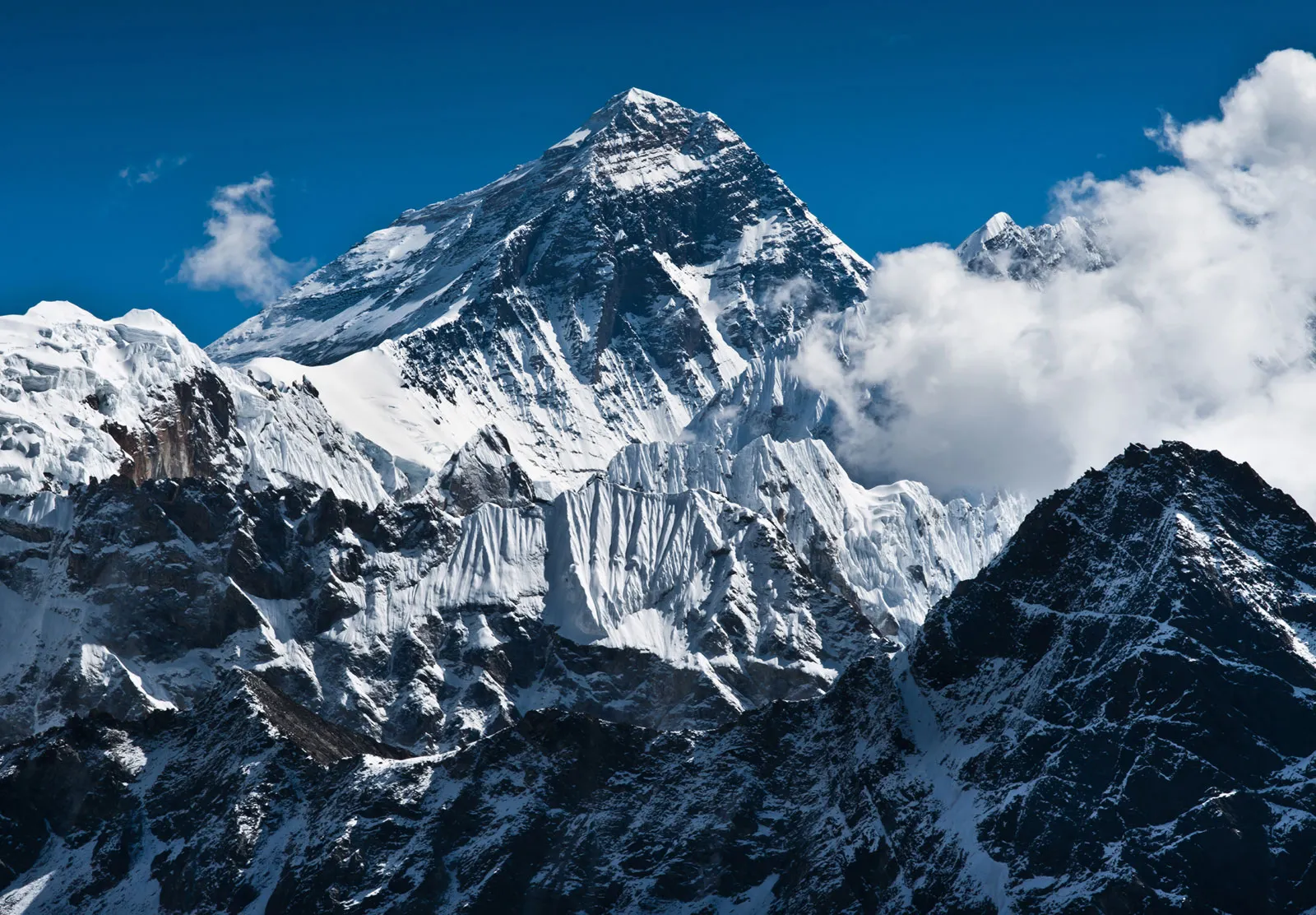Trekking in Upper Mustang Nepal
- By Malika Karki
- July 14, 2022
Table of Contents
ToggleAbout Mustang
Mustang district, also known as the ancient forbidden kingdom or Nepali grand canyon, is a great destination in western Nepal. Mustang area covers about 3,578sq km (5th largest district of Nepal) with the least population of 14,596(according to census Nepal 2078). Mustang district is part of Gandaki Provence in Northern Nepal, and its headquarter is Jomsom. With the least development and lack of proper facilities, the district is a backward district of Nepal with ancient culture.
Agriculture and animal husbandry are the main occupations of the people of the Mustang. Now the situation is changing due to the development of tourism. People are engaged in the hotel business, which is slowly uplifting the economic condition of the Mustang region. The whole district is under the Annapurna Conservation Area. Most of the people in Mustang Nepal speak Traditional Tibetan languages.
The district has two parts-Lower, Mustang, and Upper Mustang. The Lower Mustang region is well-known for its beautiful natural scenery. Thousand of local and international tourists visit Mustang because of its adventurous roads and natural beauty. The Upper region is famous for trekking and exploring caves and Monasteries. This location has a variety of rhododendron plantings, apple orchards, and a strong Buddhist culture. It is also rich in greenery.
The daily activities and habits of the mountain inhabitants are on view for visit Mustang. The Tibetan term “Mustang” means “Plain of Aspiration.” A former forbidden kingdom, was surrounded by the Tibetan Plateau and some of the world’s highest peaks, including the 8000-meter Annapurna circuit and Dhaulagiri. Due to its relative remoteness from the ouMustangorld and the fact that the bulk of the people still speaks native Tabetic languages, the district was a limited demilitarized territory up until 1992, making it one of the most conserved locations in the world.
Climate
Like other parts of Nepal, the Mustang region experiences four seasons in a year. According to the season’s, climatic condition changes in the district. As the district lies at an altitude of 3840m, it experiences extreme climatic conditions. The district is also called the “rain-shadow” area of Nepal. Rainfall is very less annual average rainfall is 307mm. In winter, the temperature can fall up to -2.7 degrees celsius. There is warmer weather in summer; the maximum summer temperature recorded was 21 degrees celsius
The temperature of the upper Mustang and Lower Mustang may vary due to the difference in altitude and geographical conditions. In the spring and autumn season, the land gets dry. In summer, climatic condition changes a bit as the monsoon brings rainfalls. Mustang district experience extreme cold in winter.
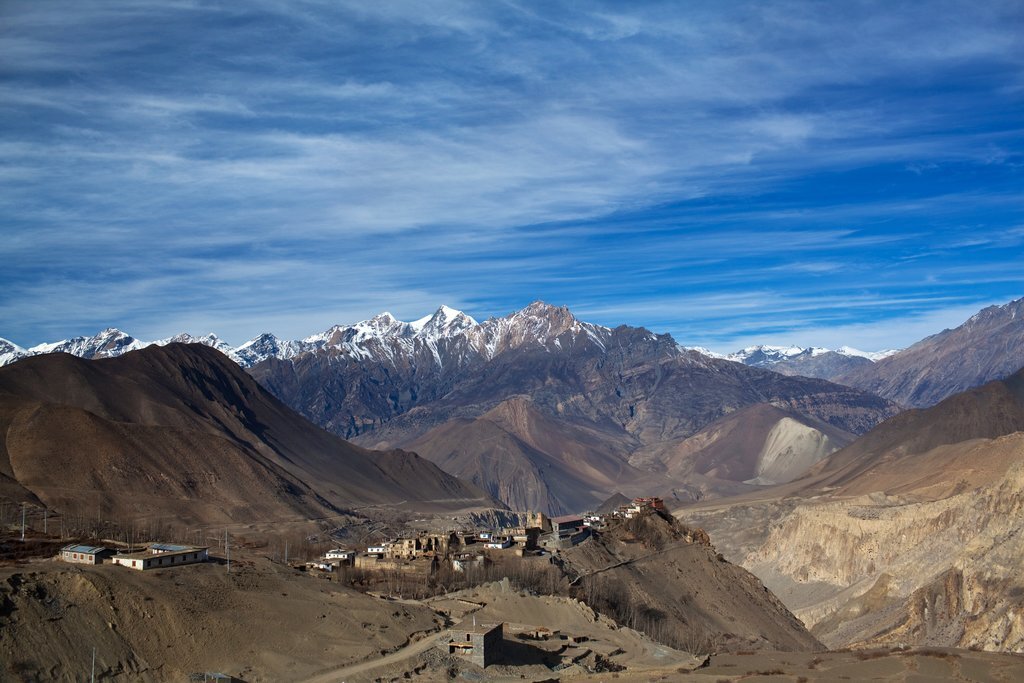
History of Mustang District
The history of the walled city of Mustang Nepal is based on the story rather than documented facts. Previously Mustang district was also called the kingdom of lo. It was part of the Ngari land of Tibet. Mustang was closely linked with the adjoining kingdom of Western Tibet and politically linked with Lhasa. In the 14th century, most of the part of Ngari was under Malla Empire. In between 15 to 17th centuries, the district has become a trade route between India and the Himalayas because of its location. In 1380 the forbidden kingdom of lo became an independent kingdom under Ame pal.
The last royal family follows its dynasty for 25 generations. The face of the walled city changed its figure after Ame Pal looked after the founding of Lo Manthang and lo. When PrithviMustangn Shah did the unification of Nepal in 1769, the great King of the Gorkha Kingdom and his army unified Nepal. In the 18th century, Mustang came under the part of Nepal kingdom in 1975 but still, locals of the district follow Tibetan Buddhist culture.
Mustang Capital
Jomsom has been declared as the district headquarter since 1970. Jomsom is also known as New fort (Dzongsam), situated with evaluation about 2,700 meters (8,900 ft) of Gandaki Province. The high peaks of Dhaulagiri and Nilgiri form the backdrop of the city spread over the Kali Gandaki River flowing through the middle of Jomsom. The local people of Jomson are mostly merchants of Thakali Tribe of Tibetan origin.
The small settlement of people near Thak Khola is called Thakalis. On the banks of Kaligandaki, black stones called Shaligram, a revered symbol and remembrance of Lord Vishnu in Hindu culture, can be found. Kaligandagi river is the main source of such rocks. Local people collect such stones and sell them to travelers in the Kali Gandaki gorge(the deepest gorge in Nepal). The city is also the main tourist destination of Upper Mustang and Muktinath. Regular flights to Pokhara from Jomsom Airport, including Nepal Army aircraft.
Upper Mustang
Upper Mustang, also called the kingdom of lo, is the upper northern part Mustang district. It was a local state and civilian area until 1992, making it one of the most protected areas in the world. Most of the Upper Mustang population still speaks traditional Tibetan languages. Mustang’s life revolves around animal husbandry, trade, and now tourism. It covers two-thirds of the northern part of Mustang district in Gandaki province of Nepal. It has three villages, including Lo Manthang, Dalome, and Baragung.
The southern third of the section (Lower Mustang) is called Thak and is the birthplace of Thakalis who speak the Thakali language and whose culture has mixed Tibetan and Nepali elements. Upper Mustang is rich in Tibetan Buddhist culture, Amazing architecture in the form of ancient monasteries, traditional villages and caves perched on cliffs, and the walled city of Lo Manthang (capital of the Mustang region). The status of the state came to an end in 2008 when the old kingdom of Mustang became the Republic of Nepal. Different countries, especially China, contribute a lot to changing the lifestyle of locals.
Upper Mustang trek
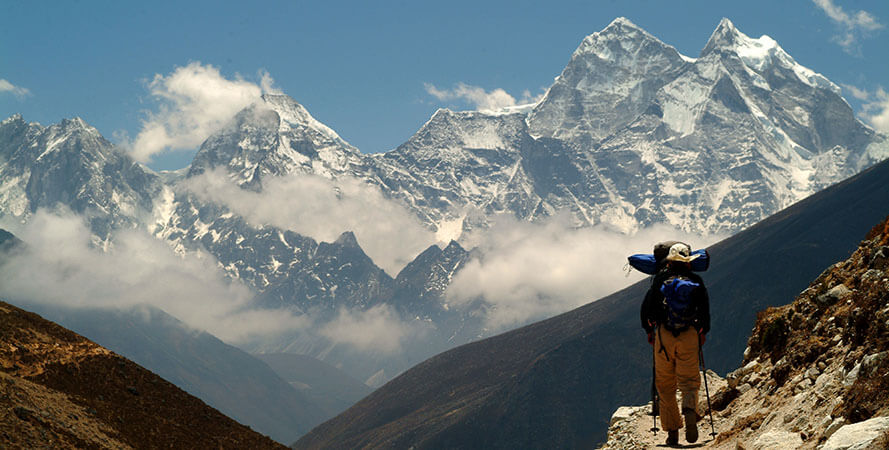
The upper Mustang trek generally takes about 15 days. The kingdom of lo is well-known for trekking and exploring caves. It is also famous for mysterious old Buddhist Monasteries and historical and religious monuments. The Lo kingdom has a distinctive culture, generally close to Tibetan culture. Visiting the old kingdom of Lo Manthang and trekking through the desert landscape with Spiers and rocks is something you should not miss while traveling the upper Mustang. This moderate, lesser-known trek is becoming one of the great destinations in Nepal and offers spectacular mountain views. The upper Mustang trek could be possible from March to late November. In winter Upper Mustang trek is not possible due to extreme cold. The locals start migrating to the lower Mustang to avoid cold and snow.
Summery Of Upper mustang trek
Day 1-2 : Arrive to Kathmandu take rest and prepare for trek
Day 3 : Fly to Pokhara and explore the beauty of Pokhara
Day 4: Fly to Jomsom and start your trek
Day 5-11: Trek up to Lo Manthang
Day 12-13: Fly from Jomsom to Pokhara
Day 14: Return to Kathmandu
Upper Mustang Region
Mustang Nepal is one of the least populated districts of the country. It borders Manang District in the east and Dolpa district in the west. Manang is the least populated district, and Dolpa is the third-least district of Nepal. The Tibetan boundary is straight out north of the Mustang district border. Mustang is divided into two subregion-Lower and Upper. Mustang Nepal is a highland trans-Himalayan region extended up to 3,640 square kilometers. The high evaluation area is part of the Tibetan highland or vast Tibetan plateau.
Best place to Visit mustang Nepal
Kagbeni village
Kagbeni Village is one of the oldest villages in the Himalayans. It is a small village with an only population of 555 people. It is connected with the road to Muktinath, on the road from Jomsom to Lo Manthang, the royal capital. Kagbebi could be the best destination to stay a few nights. The village is famous for organic apple orchards (fertilizer as cow dung). You can enjoy the green environment and visit the village’s monasteries (500 years old)age. The prayer flags in the village add more beauty to the village. The junction of kaligandaki river and Muktinath Khola is considered a holy place for Hindus too.
Muktinath Temple
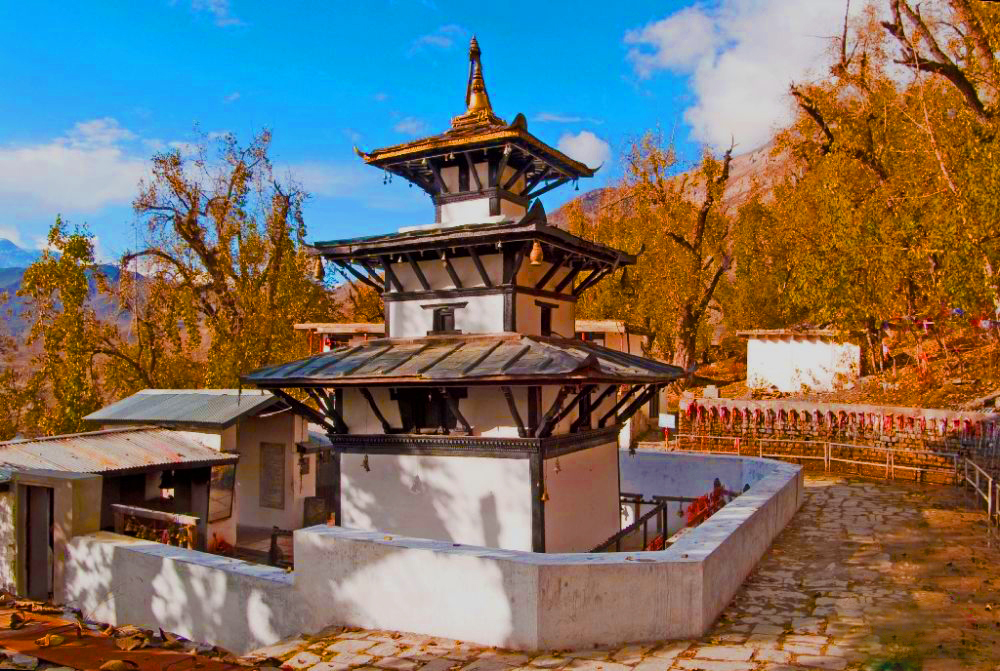
Muktinath is both a Hindu and Buddhist temple situated in Muktinath Valley. It is commonly known as Lord Vishnu Temple. It is one of the world’s highest altitude temples with an altitude of 3,800 meters. Muktinath is situated in Lower mustang, once you complete the mustang trek manage your time to visit Muktinath Temple.
Sky caves

An attractive feature of the district is the thousands of rock habitats, some highly inaccessible. Nepal’s Sky Caves, also known as the Mustang Caves, are a collection of about 10,000 man-made caves dug along the Mustang Valley. Several archaeologists and researchers explored these caves and found mummified human bodies and skeletons at least 2,000-3,000 years old.
Patrons and archaeologists have unearthed various Buddhist paintings, sculptures, manuscripts, and numerous artifacts from the 12th to 14th centuries. Caves were carved on a vertical cliff 155 feet above the valley basin overlooking the village of Samadjong on the banks of the Kali Gandaki River in Upper Mustang. In 2007, researchers from countries like the United States, Italy, and Nepal found ancient Buddhist art, paintings, manuscripts, and pottery in 13th-century Mustang caves near Lo Manthang.
Best Time To Visit Mustang Nepal
Starting from March to December, visiting Mustang, Nepal, could be possible. June to September is the best month for visiting as trekking for Mustang. Also, October to November could be the best time for the Upper Mustang trek. From the second to the third week of December, locals of the Upper Mustang region start to leave due to the unpredictable winter season. The temperature of Le Mustang can go up to -20 degrees celsius. Few locals stay in the upper Mustang to look after the village and animals. Upper Mustang trek in winter could be risky.
Lo manthang
Lo manthang is a village in Mustang District in the Gandaki Province of western Nepal. Lo manthang is the walled city also called the Kingdom of Lo with his own monarchy. The town is bordering China in the north and is also a village that connects china. The city was one of the preserved regions from the outside world. You can explore the town with a cheap Lo manthang trek. The trek follows an old route from Jomsom to Lo.
Mustang People
The total population of Mustang district is 14,981 according to the census of 2001 by the Nepalese government. It is Spread between three cities and about thirty small settlements. Most of the people of the Mustang region reside near the Kali Gandaki river gorge. The inhabitants are predominantly the Thakali, Gurung, or Tibetan bread following Tibetan culture tan Buddhism. Nepalese culture and tradition are less followed due to the influence of Tibetan culture. People of the upper Mustang start to migrate to the lower region due to unpredictable climatic conditions in winter.
Tiji Festival
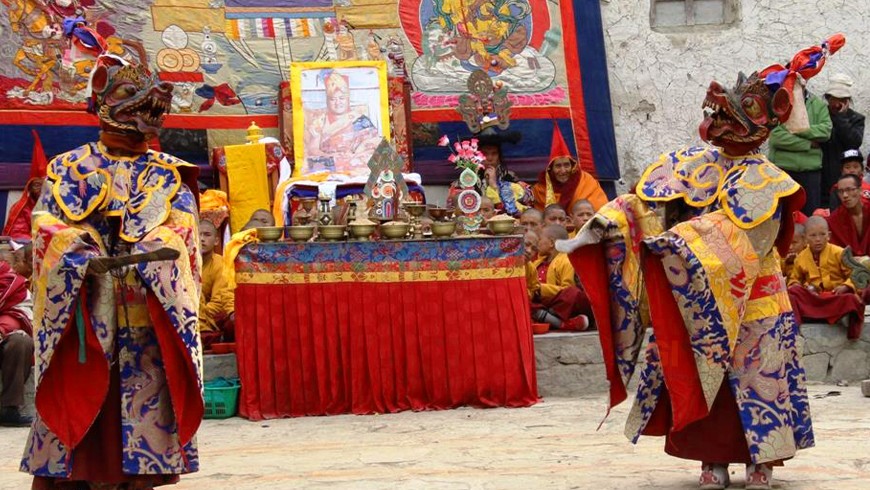
Tiji festival is celebrated in Upper Mustang. You can trek upper Mustang for the Tiji festival in May. You can find the Tiji Festival jeep tour around Pokhara to Upper Mustang. Celebration with the locals and enjoying the tradition and lifestyle of Himalayan locals could be the best memory of your life. The date of the Tiji festival is always fixed according to the Tibetan Lunar calendar. Celebrations could last up to three days.
The festival is a purifying ceremony that opens off each harvest season. The phrase “hope of Buddhism prevailing in the world for peace” is the root of the word “Tiji,” which effectively celebrates the victory of God over the devil. Various dancing events are held throughout the three-day ceremony to ward off the demon. The legend of Lo Manthang supports it. A youngster named Dorje Jono battles his evil father, who wreaks havoc in the Mustang by causing a water shortage—an extremely precious resource in the area—many generations ago. In the end, Jono defeats the demon and drives him off the dry land.
Nature

The Lower Kaligandaki Valley forms the boundary between East and West to distribute Mustang’s flora and fauna. Mustang Nepal is rich in temperate and trans-Himalayan biodiversity with flora and fauna. The biodiversity of the Upper Mustang is well studied and documented, whereas limited information about Lower Mustang is available. Five butterflies, two frog species, one reptile species, two bird species, and seven mammal species have only been recorded in Mustang, Nepal.
Both upper and Lower Mustang are home to snow leopard, musk deer, Tibetan wild ass, and Tibetan gazelle. The only indigenous fish species in Dhami’s Ghami Khola River at an altitude of 3475 m above sea level has been identified as the highest altitude fish in Nepal. The National Parks and Wildlife Conservation Act (1973) has protected six of the mammal species recorded from the Mustang area, while seven mammal species have been included in the various risk categories of the IUCN Red Data Book.
The vegetation of Mustang district is of steppe type, and there are grasslands. Cold, dry air, harsh growing weather, low rainfall, and cold air temperatures limit the permanent biomass produced by ground vegetation. Forests cover a total of 3.24% area in the Mustang. The forest structure near Jomsom is depleted and is very limited to the Upper Mustang in the alpine climate. It has been distributed in small patches in Lo Manthang and Dhami VDCs and Chuksang VDC. Lower Mustangs provide a wide range of deciduous forests such as Acer species, conifers (mainly pine), and rhododendrons. Both upper and Lower Mustang is rich in medicinal plant. A total of 121 medicinal plants were recorded in Mustang, Nepal. Of these 121 plants, 49 were vascular plants, and 92 were genus two fungi species. These plants, including different parts of the same plant, were used to treat 116 diseases.
Health
The less populated district has a total of 17 health posts. Although the health post-to-population ratio is 1:881, the health post is difficult to excess due to its inaccessibility to places and terrain. There are ten health posts, five sub-health posts, and only one hospital in Jomsom. Due to the inaccessibility of hospitals and health posts, local medicines are quite popular in both the Upper and Lower Mustang. The traditional Tibetan healers, also called Amchais, are experts in making local medicines through plants. The local Tibetan Amchi uses 72 species of plants to treat 43 human diseases. Tibetan Amchis have an excellent method of producing quality medicine. They collect medicinal plants always on their own because only they have the experience to identify the right plants.
Religion
Both Upper and Lower Mustang have a strong influence on Tibetan Buddhism. The majority of the population are Buddist. Around 60.17% of the people follow the Buddhist religion and 37.46% are Hindus. Thre are also 152 Christians, 98 Bons, 19 Kiratis, five animists, and 3 Muslims. 75% of the population is Buddhist, and 25% are Hindus.
How to reach Mustang Nepal
The journey to the Mustang high-altitude desert of Nepal is accessible by air and road. You can take a flight to Pokhara from Kathmandu. Once you reach Pokhara, you can book a taxi or take a flight to Jomsom; it takes about 20 minutes to get to Jomsom Airport. A mountain biking facility is also provided from Pokhara through Prithvi Highway; it takes about 6 to 7 hours to reach Jomsom. The official checkpoint for the restricted area is Kagbeni village, north of Jomsom. You can enjoy the journey by land with stunning scenery and a nearby town on the way. Different great destination(s) along with prayer flags are seen when you travel by bus with a local guide. Once you reach Kagbeni village, you can also enjoy the beauty of the town.

